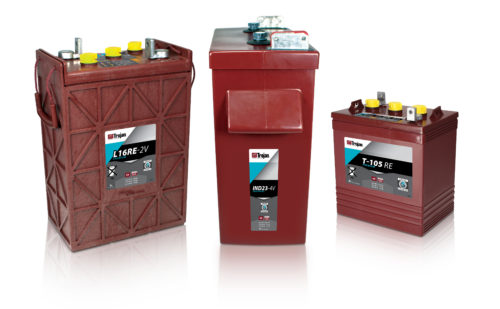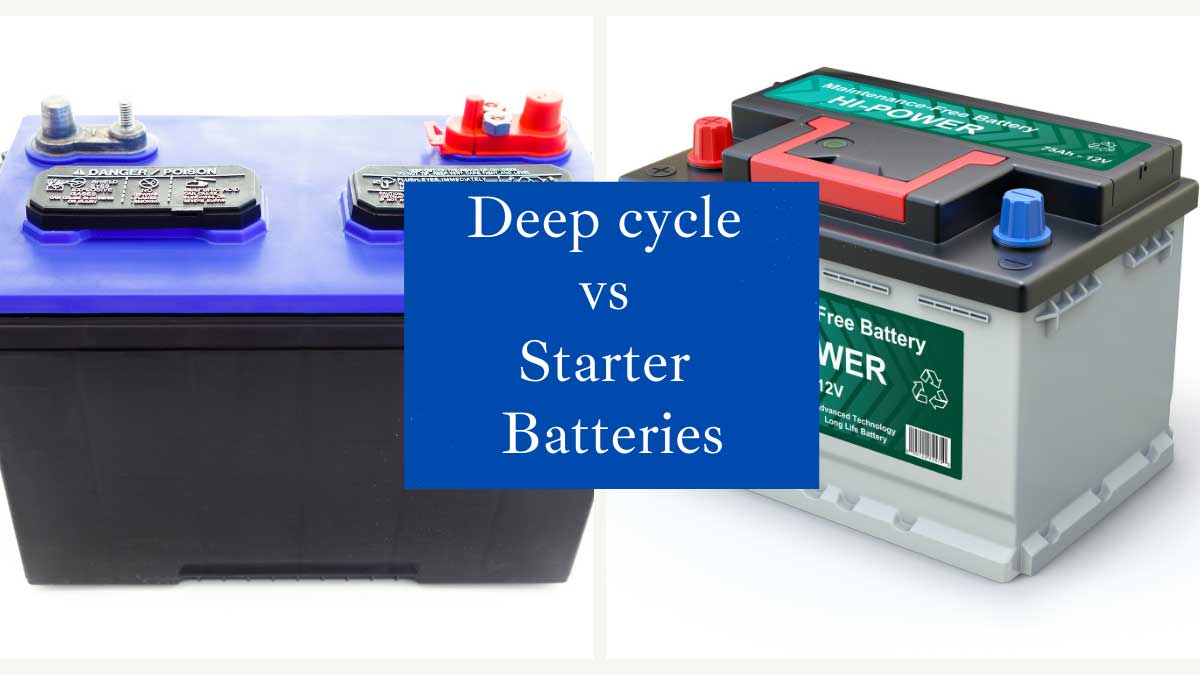While both deep cycle batteries and starter batteries are lead-acid batteries their uses totally differ and are different in how they are made. Lithium-ion deep-cycle batteries are more common nowadays. But in this article, we are comparing lead-acid types.
A deep-cycle battery can be used continuously for hours and recharged over a fairly short period of time. A starter battery is made to provide a burst of amps in a short period of time to start an engine. Once the engine has started the alternator takes up the job and there is no more draw on the battery.
A deep cycle battery isn’t suitable to start an engine as it may not have the burst of power needed to start the engine while deep cycling a starter battery can ruin it quickly and can only last for a few deep discharges (around 150).

Starter batteries like the one in your car have a large number of thin plates comprised of a lead sponge. This provides a very large surface for the electrolyte to react providing a big draw of power.
A deep cycle battery on the other hand is characterized by thicker and fewer plates. There is less surface to react with the electrolyte so the current release is slower therefore ideal for a steady draw.

A deep cycle battery is the recommended type of battery to use in either a solar collector( photovoltaic), backup power, RV, or boat application.
